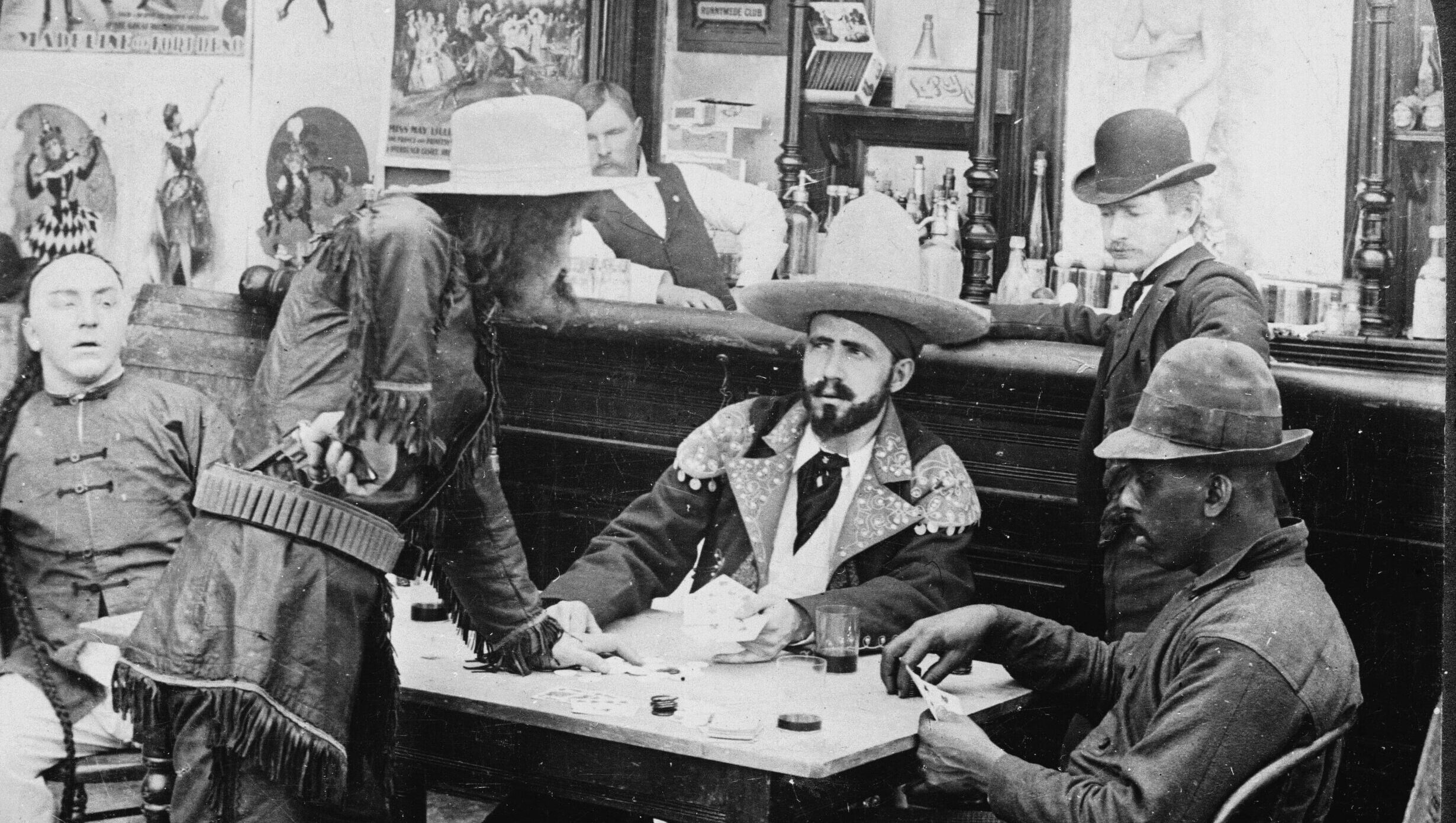Miseducating Americans: Distortions of Historical Understanding
By Richard F. Hamilton
(New Brunswick, NJ: Transaction, 2014)
While reading Miseducating Americans: Distortions of Historical Understanding, I was reminded of the Wendell Berry remark in Another Turn of the Crank (1995): “When history has been reduced to cliché, we need to return to the study of history.” Richard F. Hamilton might agree with Wendell Berry. Throughout his book, political scientist Hamilton bemoans what he considers the loss of inquisitiveness in the academy. To him, seemingly advanced thinkers generally and unquestionably accept and then parrot prevailing historical narratives. This is not to say the contemporary academy does not have the intellectual ability for robust critical thinking. Nevertheless, scholars have often failed to exercise inquisitiveness and have become intellectually flabby. This intellectual obesity, Hamilton indicates, has become epidemic and has had long-term effects as it has spread among the American public, which relies on the academy’s research (or lack thereof).
Many in the academy, Hamilton asserts, have wholeheartedly accepted others’ interpretations and therefore perpetuate many historical inaccuracies. He exhorts scholars to ask more questions and avoid accepting handed-down, deterministic ideologies and applying them to a complicated past. In other words, scholars should exercise their critical-thinking abilities.
Miseducating Americans is in many ways a call to action. In Hamilton’s words, “The principal aim is to encourage better reports of those events in the nation’s history and in some other countries” (xiv). He criticizes two general interpretations. One interpretation, he claims, is too celebratory, and another, “the progressive tradition,” is too critical of all leaders and decisions (xiv). Although Hamilton in some ways has set up a rigid dichotomy regarding historiography, many American historical figures, such as the Founders, are indeed either deified or demonized. Hamilton reminds readers that the past is nuanced.
Hamilton also wishes to encourage accuracy and a muscular marshaling of evidence. A historian should not make claims, he argues, based on a dearth of evidence. He admonishes scholars to admit when they do not know. So in many ways, Hamilton is trying to inject some humility into the academic body. Historians, however, sometimes work with limited sources and must make educated guesses. Even if the sources are ample, one might not truly know what happened. The inevitable result is multiple interpretations, for even the most impartial historian is an individual influenced by personal biases and motivations.
Hamilton’s work omits a description or definition of history, and he does not, I fear, fully appreciate the craft of history. Granted, many historians have a proclivity to conclude hastily without performing sufficient research, and their conclusions may be influenced by presuppositions. The historian’s craft, however, necessitates that he participate in mythmaking, the sense that one is remembering the past and giving it some type of transcendental significance. This does not mean the practice of fabrication. As Russell Kirk writes: “We live by myth. ‘Myth’ is not falsehood; on the contrary, the great and ancient myths are profoundly true. . . . A myth may grow out of an actual event almost lost in the remote past, but it comes to transcend the particular circumstances of its origin, assuming a significance universal and abiding.”
History is not simply the accumulation of facts bound in volumes gathering dust on bookshelves. Although facts and record keeping are an integral part of history, one must make something of the facts. As historian John Lukacs has reminded readers, “History is the memory of mankind.” “For a long time—and for many professional historians even now—history,” Lukacs continues, “has been only the recorded past. No, it is more than that: it is the remembered past. It does depend on records; but it is not merely a matter of records.” As Lukacs explains, history is all that has happened, what is remembered about those events, and what is recorded. To express it another way, we do not recall all that has happened in our lifetime, and many times we remember more than what has been recorded. And when we think back on our lives or look at old letters or yearbooks—our records—we interpret our past and give it meaning. When others look at our records, they are interpreting and remembering our life and giving it meaning.
In Miseducating Americans, Hamilton furthermore contends that departmental compartmentalization in the academy has produced an incomplete, if not false, historical understanding. The solution, he argues, is for historians to use an interdisciplinary methodology, one that Hamilton uses in Miseducating Americans and encourages others to adopt. Compartmentalization, or a strict disciplinary lens, can turn into intellectual blinders, limiting vision to what only is directly ahead. A broader world, therefore, is unseen and missed. In essence, Hamilton encourages more in-depth and careful interdisciplinary research that reflects the subtleties and necessary distinctions one must make when studying history.
Miseducating Americans has seven chapters. The first two chapters—approximately 42 percent of the book, excluding introduction and index—address the idea of freedom and race relations in the United States. Readers may consider this an indirect skepticism regarding claims of American exceptionalism. In chapter 3, Hamilton rehabilitates President Benjamin Harrison’s reputation and presents him as more of an independent thinker than many have previously claimed, and in chapter 4, Hamilton presents McKinley as a strong and decisive leader. Chapters 5–7 examine the United States in a global context. In chapter 5, Hamilton argues that the nation’s diplomatic history has been misrepresented and its expansionist impulse overstated. In chapter 6, he emphasizes the importance of military history and laments what he considers the omission of war studies in university textbooks. In the last chapter, he suggests some ideas for comparative and more comprehensive curricula to help Americans understand the role and place of their country in a changing economic and political world.
In the first chapter, Hamilton attempts to examine thematically the founding, early republic, and antebellum eras to point out what he believes are far too many sweeping and simplistic and celebratory generalizations concerning a complex United States history. In particular, he questions whether American colonists considered themselves “Americans” before the Revolutionary War commenced. It is too simple, he argues, to present the conflict as one between virtuous “Americans” and tyrannical “British.” Indeed, Hamilton has a point; colonists considered themselves British, and some eventual and ardent Patriots had questioned withdrawal until six months or so before the signing of the Declaration of Independence. Loyalists also abounded in certain parts of the fledgling nation.
He further believes that celebratory accounts downplay the existence of slavery in the “Land of the Free,” extol its “belated” ending, and ignore how other countries peacefully dissolved the institution. Proponents of emancipation and defenders of slavery, he reminds readers, were located in both North and South. Hamilton furthermore argues that the American expansionist impulse has been overstated and misrepresented. Americans were divided regarding expansion, and he claims the Polk administration was the only truly expansionist one. (The book does not describe the Indian Removal Acts.) Some of the other acquisitions, such as the Louisiana Purchase, were not products of an expansionist impulse. Unexpected circumstances and diplomatic negotiations, he writes, prompted those territorial gains.
In chapter 2, Hamilton continues exploring the United States as the “land of the free.” In doing so, he points out unfulfilled promises of the Civil War and contends those whom many have labeled the “ignorant masses” were not the cause of many postwar racial conflicts. When discussing the Memphis Riot of 1866, the Cincinnati Riot of 1884, and the Wilmington Riot of 1898, Hamilton argues that the police and politicians, the elites, and the newspapers incited violence, depending on location. After the relocation of many southern African Americans during World War I to find work in northern factories, violence occurred. The housing shortage and lack of reform prompted more violence. After World War II, Hamilton describes a new type of protest—civil disobedience.
Indeed, the picture of the American scene is not rosy. Hamilton uses the aforementioned examples to reveal that “high status” persons or the “elite” or the “upper-class” initiated and participated in the most well-known and horrific racial conflicts. In a passage that is apparently an afterthought, he also discusses the discrimination against Mexicans, Chinese, and even German Americans during World War I. (Only a sentence describes the Japanese-American internment in camps during World War II.)
Hamilton then devotes two chapters to an examination of American personalities. He wonders if what he calls progressive historians understand President Benjamin Harrison. The president, he argues, was not a shill for big business, nor a helpless executive controlled by political circumstances. Citing recent scholarship, Hamilton points out that only two members of Harrison’s cabinet were businessmen, and that he is on the record as considering trusts to be dangerous to America’s economy. Hamilton also states that Harrison’s misunderstood foreign policy focused on national defense and establishing naval bases abroad more than in controlling territories. If Harrison had been consumed with an expansionist impulse, Hamilton suggests, he would have seized offered opportunities to gain more control in Hawaii and in the Caribbean.
Hamilton also works to rehabilitate President William McKinley’s reputation by showing that he was not an indecisive and weak-kneed leader controlled by a famous campaign manager, Mark Hanna, and a business tycoon, Andrew Carnegie. Hamilton denies that Theodore Roosevelt quipped that McKinley had the backbone of an éclair; there are no sources for that quotation, writes Hamilton, and in correspondence with others, the outdoorsman expresses an appreciation for McKinley. Hamilton later maintains that Carnegie was politically aware and offered presidents his advice and opinion. Even if Carnegie had the ear of Harrison and McKinley, his views do not support the expansionist narrative, for Carnegie questioned annexation efforts after the Spanish American War and rarely mentioned China—to name two examples. In the end, McKinley is presented as motivated by something other than an expansionist impulse.
Indeed, many texts describe late-1800s America as a budding empire that used the dollar to establish hegemony. Hamilton, once again in chapter 5, contends that the expansionist impulse has been exaggerated. In particular, a false yet enduring and influential progressive narrative of American interest in China, with the Philippines serving as a stepping-stone, he argues, began in Charles Beard’s influential The Rise of American Civilization. During this time, the United States had minimal trade with China, and Hamilton argues that the lucrative markets were in Canada, England, France, and Germany.
In a somewhat disconnected chapter, Hamilton bemoans the lack of military history course offerings and descriptions of war in textbooks. There is a vast empty space regarding military knowledge, and the intellectual class, he contends, “persons purporting to operate in the liberal or enlightenment tradition,” have created this ignorance. To Hamilton, that is “shameful.” However, he seemingly discounts certain programs at universities that emphasize the study of war and peace and the war front and the home front. Social history distracted historians from military history, but the situation is not as dire as Hamilton suggests.
Although I agree with Hamilton that scholars should be exemplars of robust, critical thinking and ask more questions, Miseducating Americans proves that point in the first few chapters. Much of the book appears to consist of afterthoughts, especially at the end of chapters. Perhaps this impression is the result of compiling previously published articles or lectures not adequately assimilated into the argument of the book.
Miseducating Americans succeeds in its main goal of exhorting scholars to be more skeptical of both excessively celebratory accounts of American history and of more negative progressive accounts. At the very least it should prompt them to ask more questions and scrutinize historiographical interpretations more carefully. Nevertheless, its somewhat randomly selected examples do not offer a convincing alternative interpretation of American history, and, in any case, compilations of historical facts without a unifying vision of their meaning results in a farrago of disconnected data with no clear significance. ♦
Troy Kickler holds a PhD in history from the University of Tennessee and is the director of the North Carolina History Project. His work has appeared in such publications as Tennessee Historical Quarterly, Journal of Mississippi History, Tennessee Baptist History, and Journal of the North Carolina Association of Historians.














